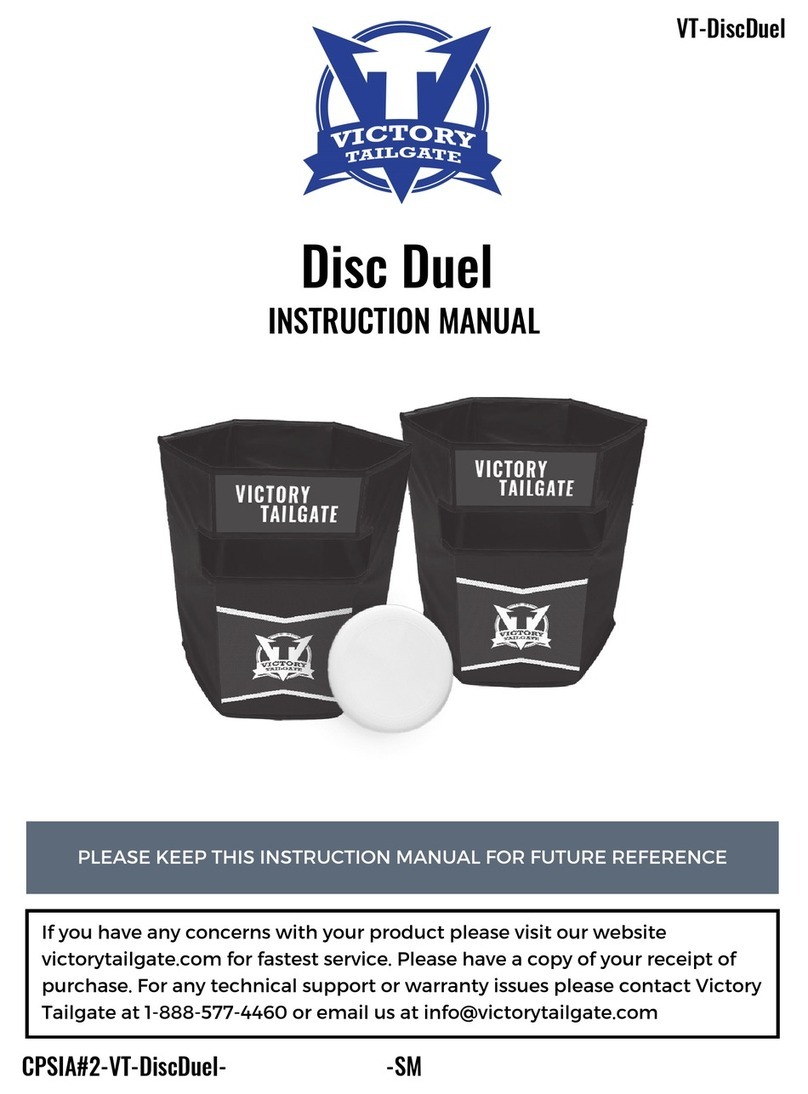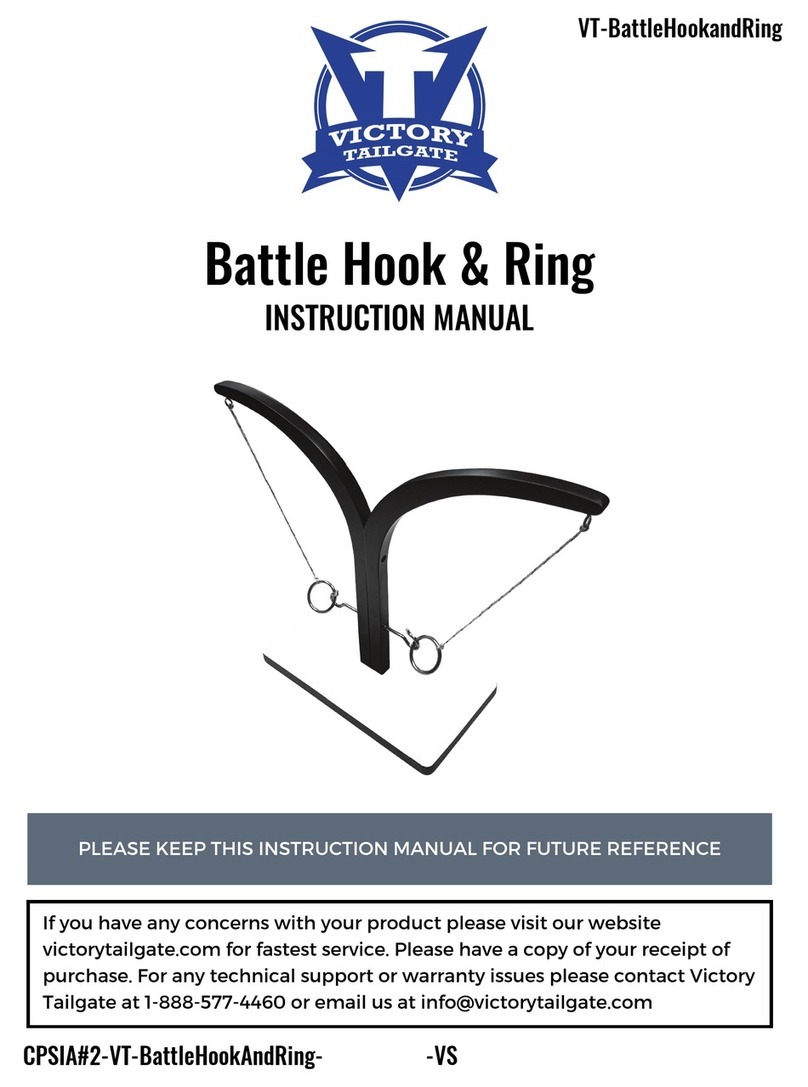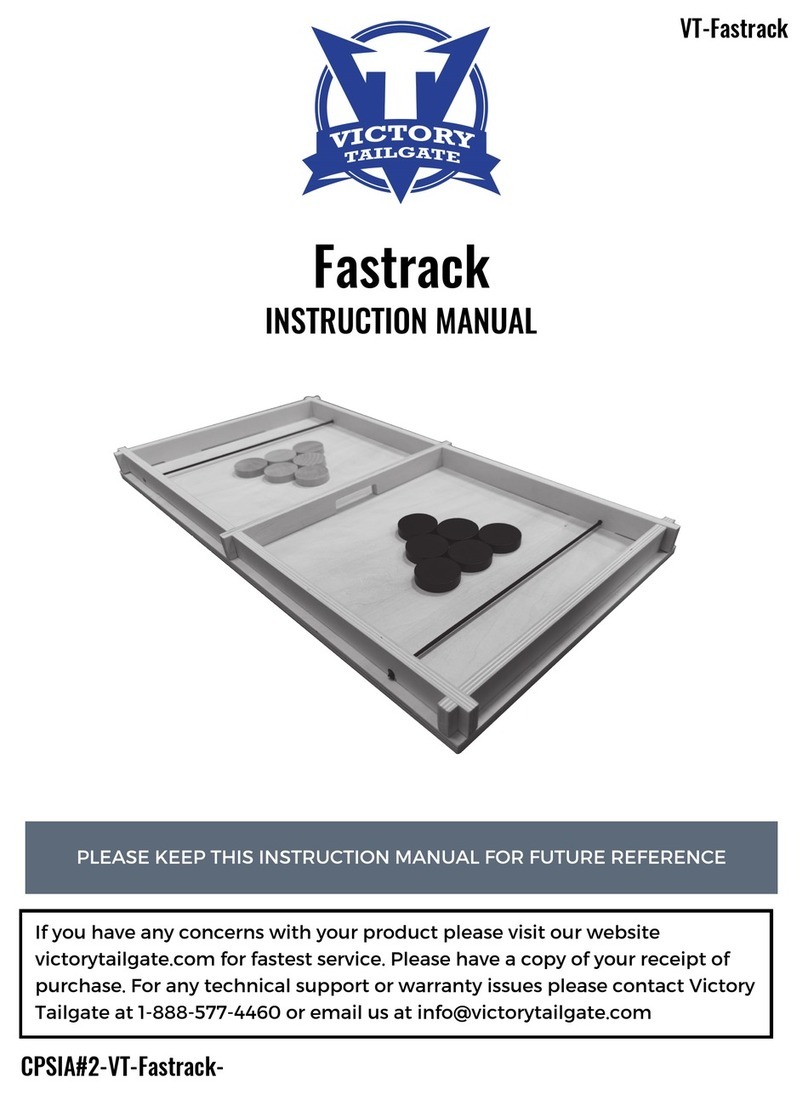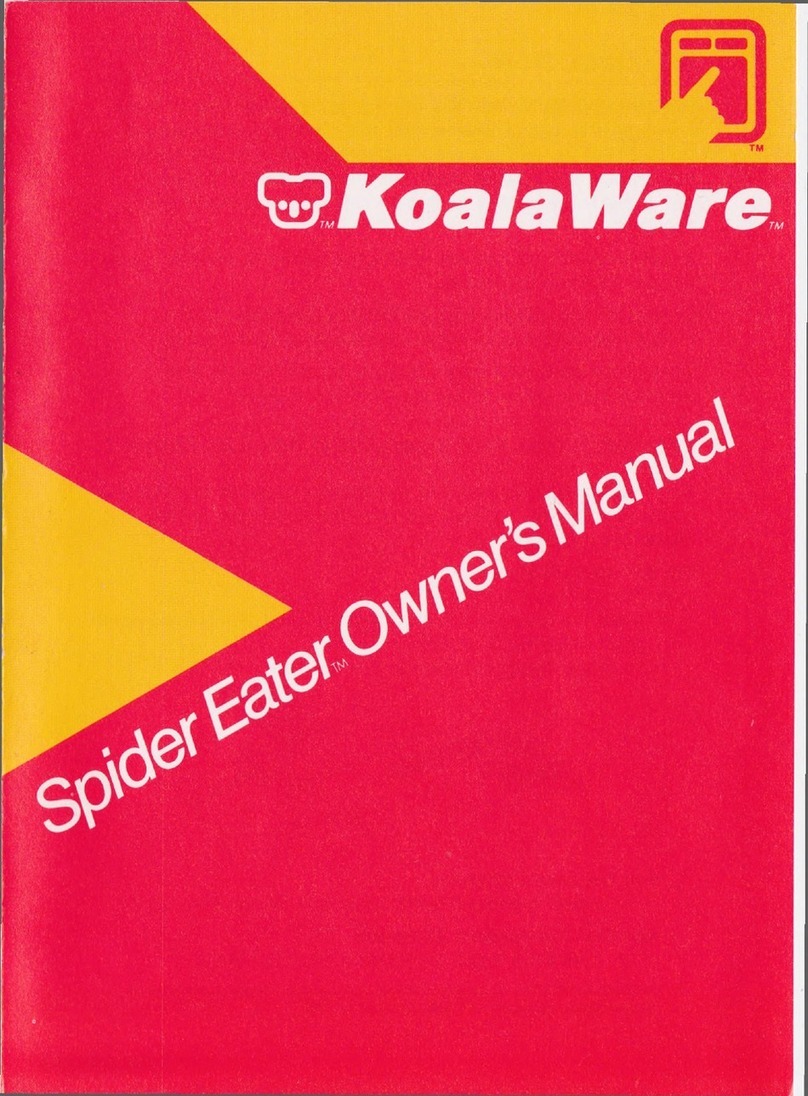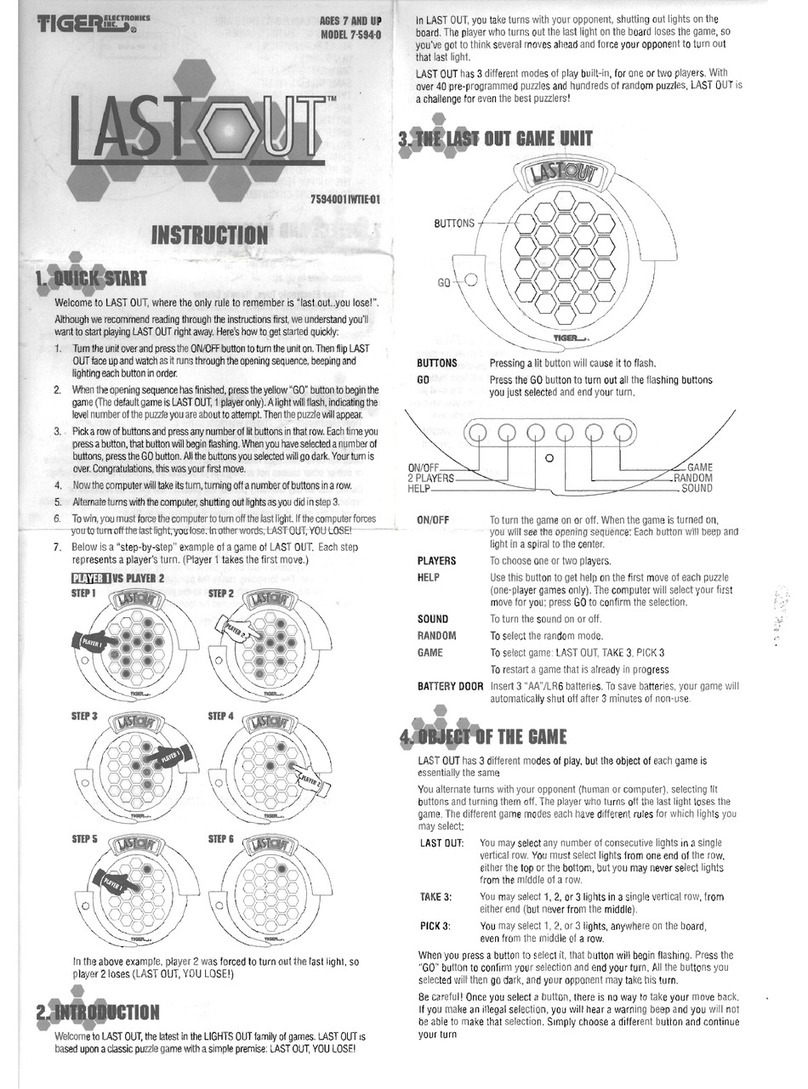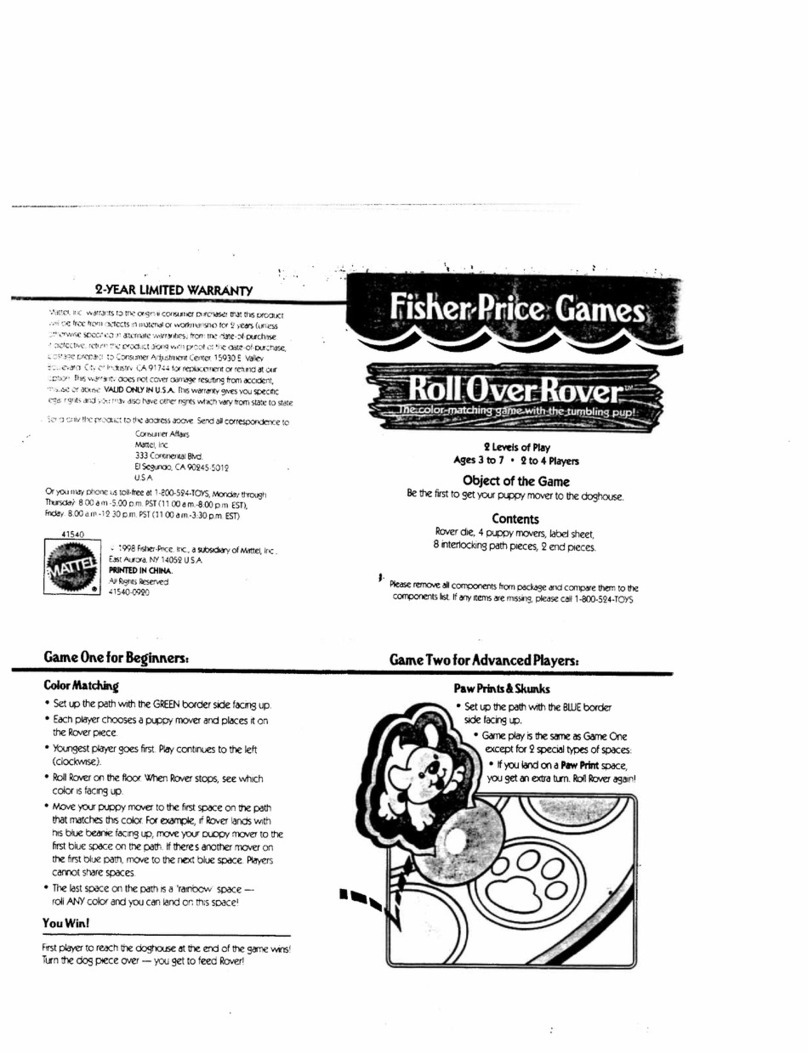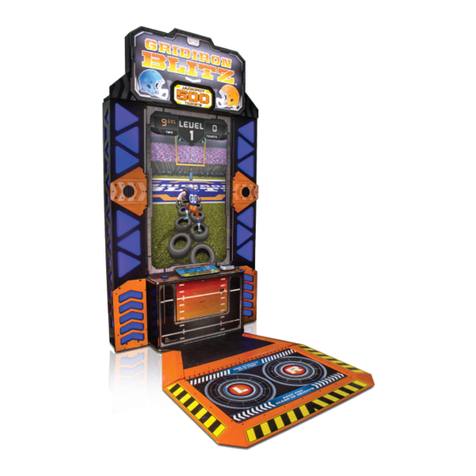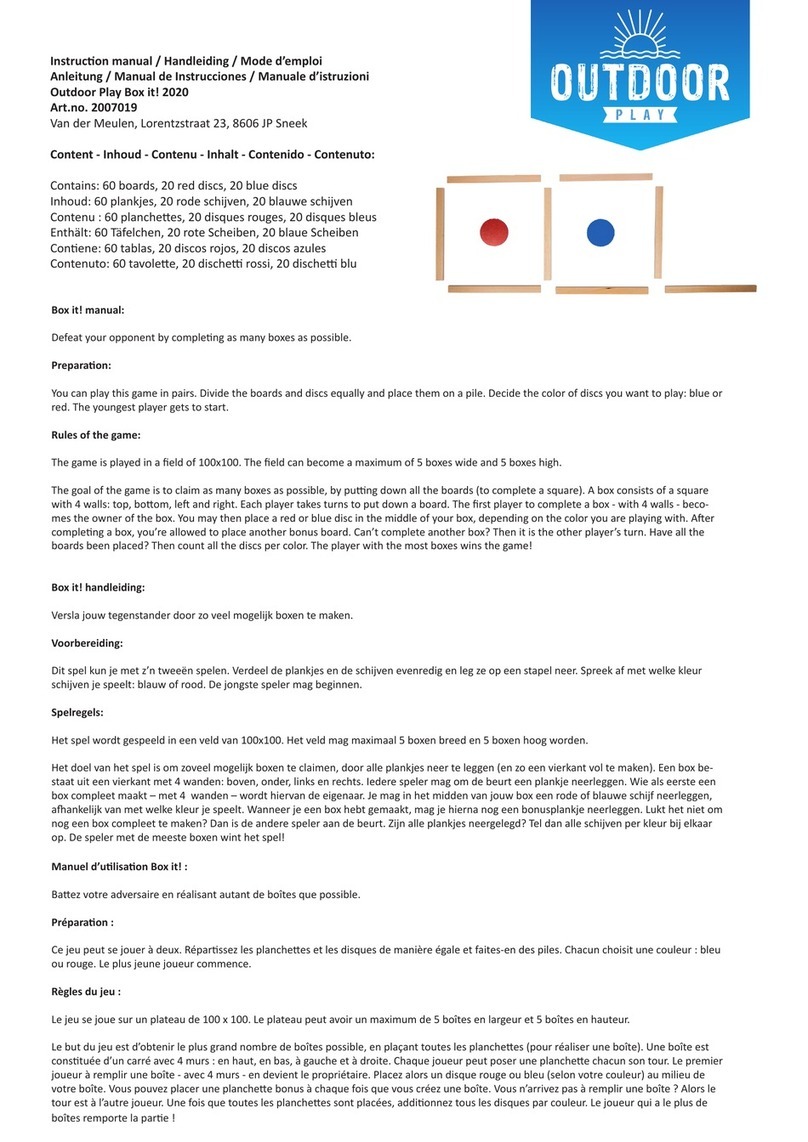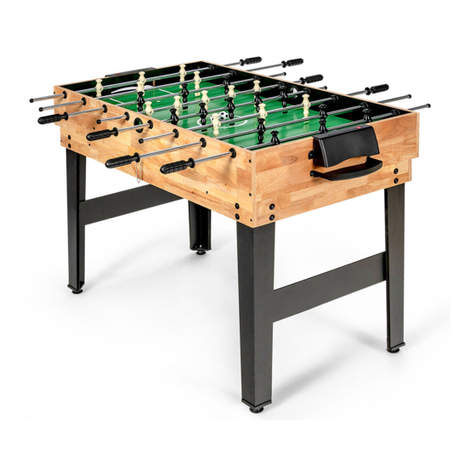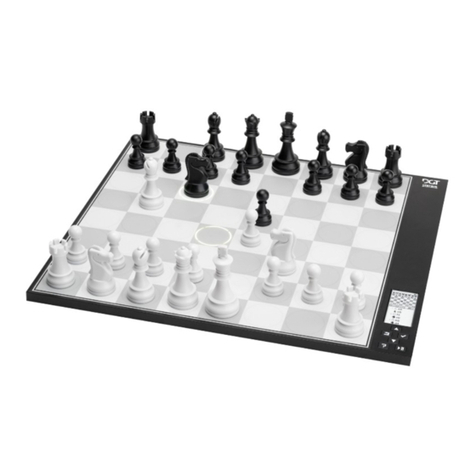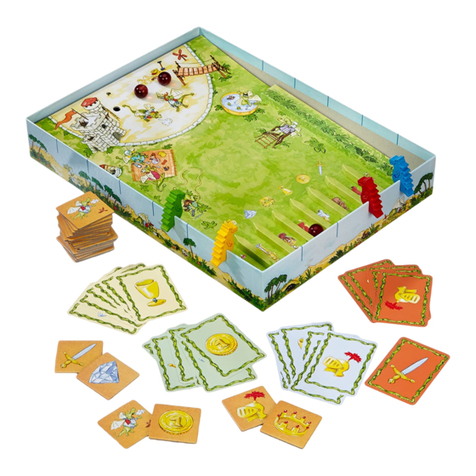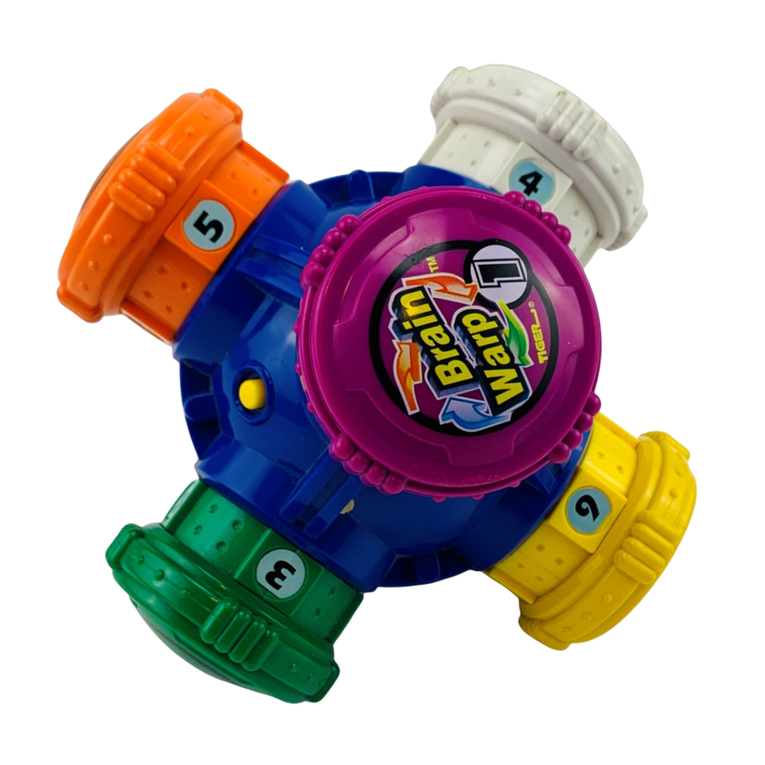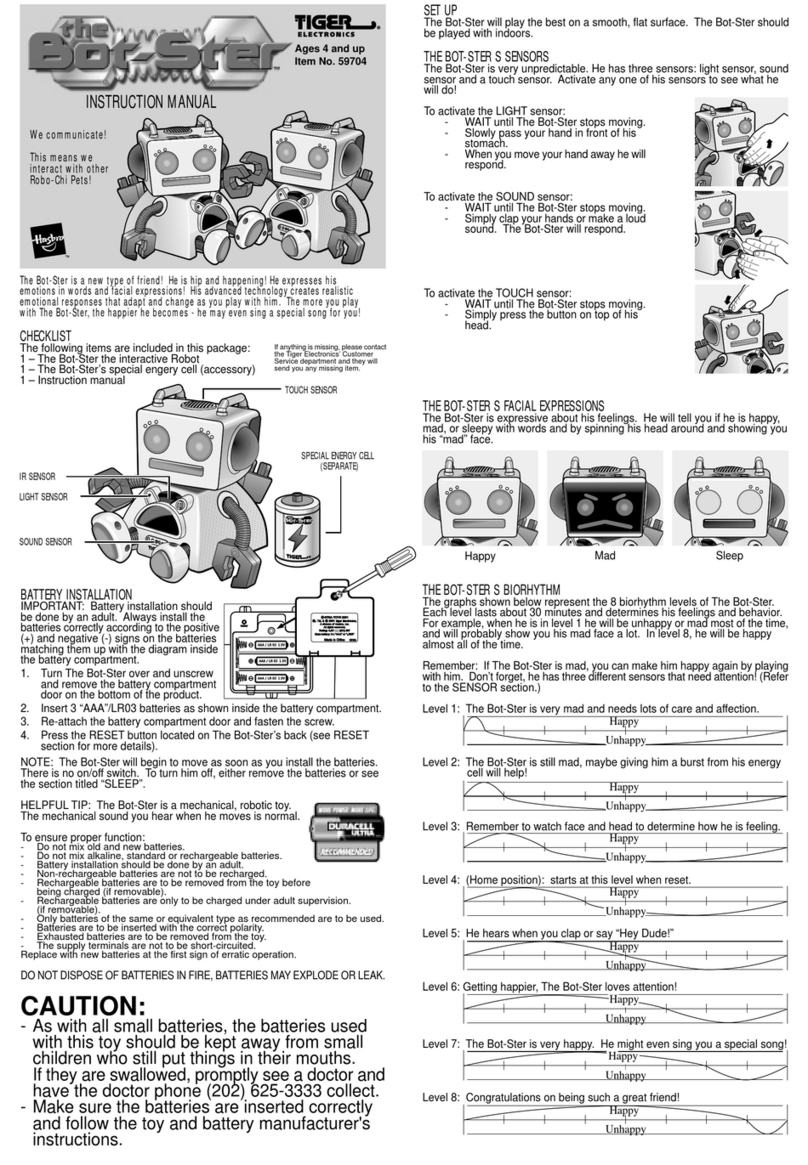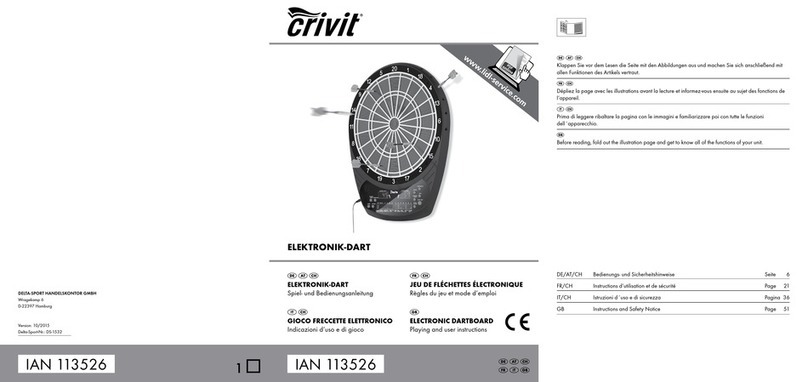
TABLE TENNIS RULES AND GAME PLAY
There are 2 types popular Table Tennis rules known in the world-wide:
- 6 -
1. 11 Points Game Play
The ITTF has adopted the 11 Point Game for legal tournaments including the Olympic Games. This is most popular game rule.
•
Each player serves 2 balls each serve. After a player serves 2 balls, the serve changes to opponent. When serving, the ball
must bounce on player's side and then bounce on opponent's side. If the ball bounces on opponent's side without bouncing
on player's side first, this is a fail serve and opponent gets score.
When a player serves the ball and it bounces on player's side first, touches the net and then bounces on opponent's side, it
will be determined as a NET BALL. Player should serve again until he performs a good serve or a out ball.
When a player serves the ball and it bounces on player's side first then misses opponent's side (didn't bounce on each side
of table), it will be determined as an OUT BALL. Also, if it touches the net and then misses the table, it will also be determined
as an OUT BALL and opponent gets score.
If score reaches 10-10, it is in DEUCE condition. In this condition, each player serves 1 ball. To finish the match, the score
difference betweenplayers must be 2.
In normal condition, player who first gets 11 points is the winner.
•
•
•
•
2. 21 Points Game Play
In a 21 Point Game, the rules are almost same as 11 Point Game. The difference is the game will end when one of the players
reach point 21. Each player serves 5 balls and DEUCE condition is when both player reach 20-20.
The rules are below:
•
Each player serves 5 balls each serve. After a player serves 5 balls, the serve changes to opponent. When serving, the ball
must bounce on player's side and then bounce to opponent's side. If the ball bounces on opponent's side without bouncing
on player's side first, this is a fail serve and opponent gets score.
When a player serves the ball and it bounces on player's side first, touches the net and then bounces on opponent's side, it
will be determined as a NET BALL. Player should serve again until he performs a good serve or an out ball.
When a player serves the ball and it bounces on player's side first then misses opponent's side (didn't bounce on each side
of table), it will be determined as an OUT BALL. Also, if it touches the net and then misses the table, it will also be determined
as an OUT BALL and opponent gets score.
If score reaches 20-20, it is in DEUCE condition. In this condition, each player serves 1 ball. To finish the match, the score
difference between players must be 2.
In normal condition, player who first gets 21 points is the winner.
•
•
•
•

